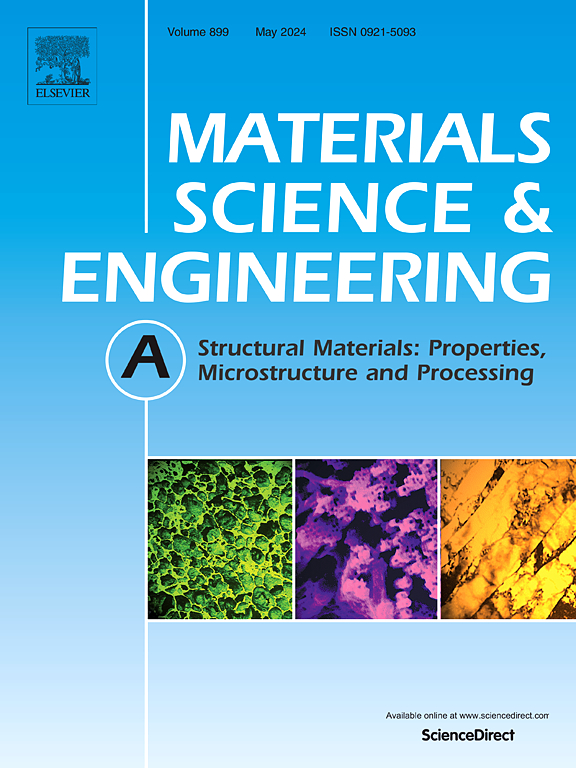Ni含量对含cu高强钢组织和力学性能的影响
IF 7
2区 材料科学
Q1 MATERIALS SCIENCE, MULTIDISCIPLINARY
引用次数: 0
摘要
含cu高强度低合金(HSLA)钢被广泛用于要求平衡强度和低温韧性的苛刻应用中,其中Ni是影响显微组织演变和力学性能的关键合金元素。系统研究了含镍量(1.5 ~ 3.5 wt%)对含铜高强钢强化机理的影响。随着Ni含量的增加,钢的淬透性显著增强,组织由贝氏体/马氏体混合组织逐渐转变为完全板条马氏体。先前的奥氏体晶粒和马氏体亚结构被细化。晶粒细化强化是屈服强度提高的主要原因。较高的Ni含量也增加了位错密度,并略微增加了富cu纳米沉淀物的数量密度,但对它们的平均尺寸(~ 12 nm)影响不大。结合霍尔-佩奇分析和边界取向偏差评价,块体的高角度边界有效地阻碍了位错的运动,从而确定了块体为有效的强化单元。本文章由计算机程序翻译,如有差异,请以英文原文为准。
Effect of the Ni content on the microstructure and mechanical properties of Cu-bearing high-strength steels
Cu-bearing high-strength low-alloy (HSLA) steels are widely used in demanding applications requiring a balance of strength and low-temperature toughness, where Ni is a key alloying element influencing both microstructural evolution and mechanical properties. The effect of Ni content (1.5–3.5 wt%) on the strengthening mechanisms of Cu-bearing high-strength steels was systematically investigated. As Ni increased, the hardenability of the tested steels was significantly enhanced, and the microstructure gradually transformed into fully lath martensite from bainite/martensite mixed structure. Prior austenite grains as well as martensitic substructures were refined. Grain refinement strengthening was the dominant contributor to the increased yield strength. Higher Ni content also increased dislocation density and slightly raised the number density of Cu-rich nanoprecipitates, while having little effect on their average size (∼12 nm). Hall-Petch analysis combined with boundary misorientation evaluation identified the block as the effective strengthening unit, due to its high-angle boundaries that effectively impede dislocation motion.
求助全文
通过发布文献求助,成功后即可免费获取论文全文。
去求助
来源期刊

Materials Science and Engineering: A
工程技术-材料科学:综合
CiteScore
11.50
自引率
15.60%
发文量
1811
审稿时长
31 days
期刊介绍:
Materials Science and Engineering A provides an international medium for the publication of theoretical and experimental studies related to the load-bearing capacity of materials as influenced by their basic properties, processing history, microstructure and operating environment. Appropriate submissions to Materials Science and Engineering A should include scientific and/or engineering factors which affect the microstructure - strength relationships of materials and report the changes to mechanical behavior.
 求助内容:
求助内容: 应助结果提醒方式:
应助结果提醒方式:


